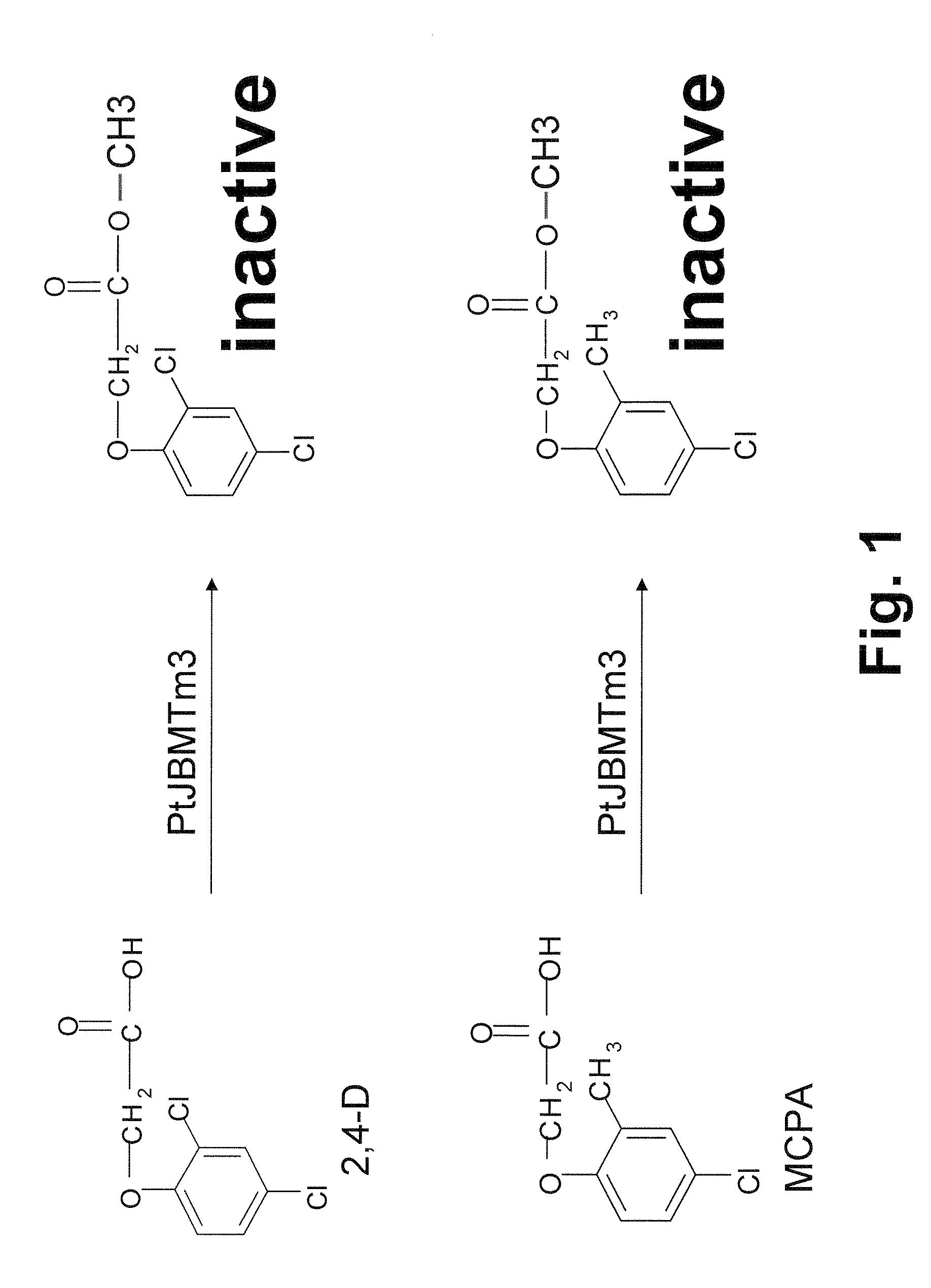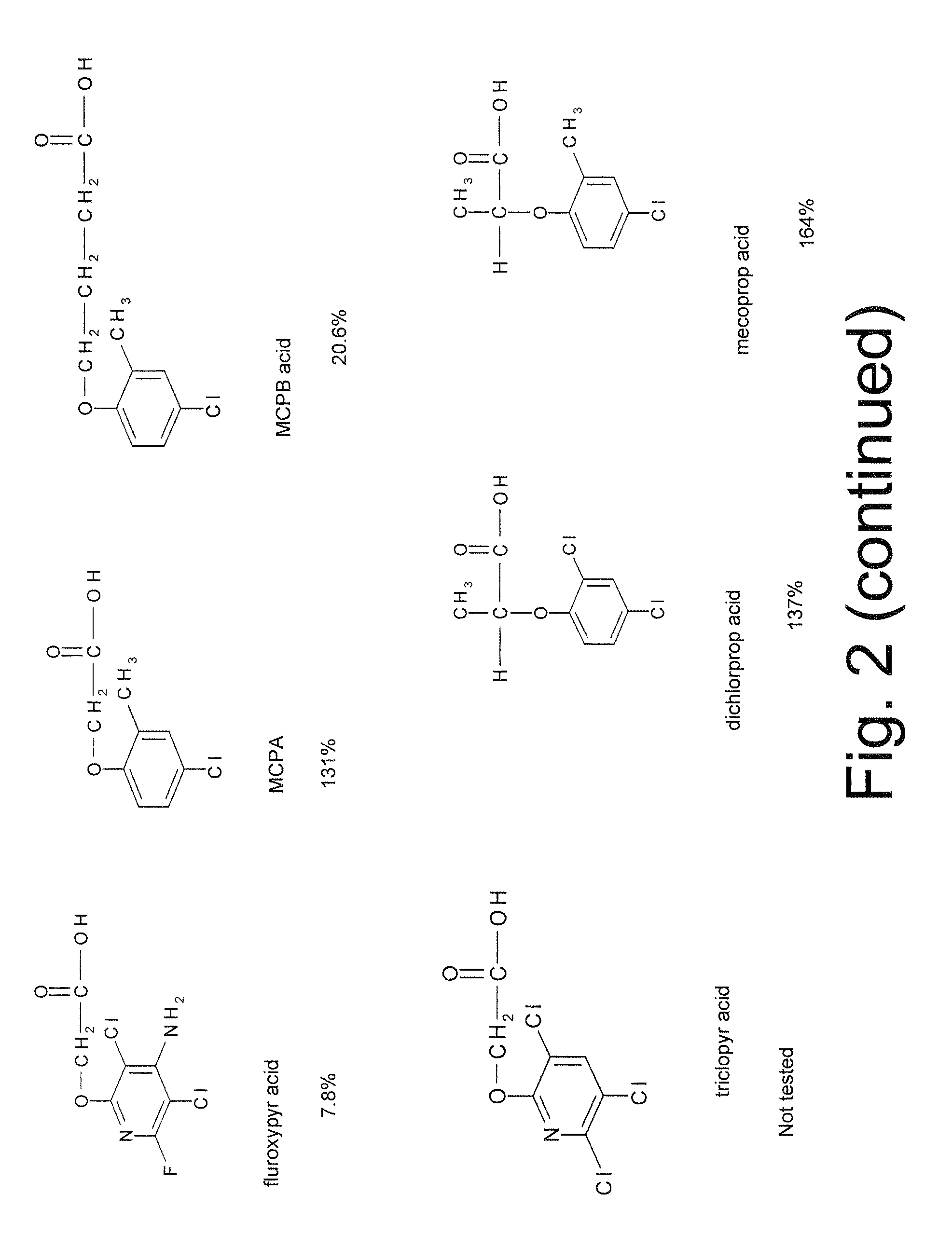Novel herbicide resistance gene
a technology of herbicide resistance and gene, applied in the field of new herbicide resistance gene, can solve the problems of low price and performance of glyphosate, few conventional weed control programs can effectively compete on price and performance, and poor selectivity of dicot crops like soybean or cotton
- Summary
- Abstract
- Description
- Claims
- Application Information
AI Technical Summary
Benefits of technology
Problems solved by technology
Method used
Image
Examples
example 1
Biochemical Assays to Determine Detoxification Activity
[0184]The detoxification activity of PtJBMTm3 was determined using radiochemical methyltransferase assays. The assays were performed with a 50 μL volume containing 50 mM Tris-HCl, pH 7.5, 1 mM of individual auxin mimic herbicides dissolved in water, and 3 μM 14C—S-Adenosyl methionine (SAM) with a specific activity of 51.4 mCi / mmol (Perkin Elmer, Boston, Mass.). The assay was initiated by addition of SAM, maintained at 25° C. for 30 min, and stopped by addition of ethanol acetate (150 μL). After phase separation by one min centrifugation at 14,000 g, the upper organic phase was counted using a liquid scintillation counter (Beckman Coulter, Fullerton, Calif.) as previously described (D'Auria et al., 2002). Radioactivity counts in the organic phase indicated the amount of synthesized methyl esters, which are the detoxificated products of individual auxin mimic herbicides. The relative assay activities of PtJBMT and PtJBMTm3 with au...
PUM
| Property | Measurement | Unit |
|---|---|---|
| Fraction | aaaaa | aaaaa |
| Electrical conductance | aaaaa | aaaaa |
| Area | aaaaa | aaaaa |
Abstract
Description
Claims
Application Information
 Login to View More
Login to View More - R&D
- Intellectual Property
- Life Sciences
- Materials
- Tech Scout
- Unparalleled Data Quality
- Higher Quality Content
- 60% Fewer Hallucinations
Browse by: Latest US Patents, China's latest patents, Technical Efficacy Thesaurus, Application Domain, Technology Topic, Popular Technical Reports.
© 2025 PatSnap. All rights reserved.Legal|Privacy policy|Modern Slavery Act Transparency Statement|Sitemap|About US| Contact US: help@patsnap.com



